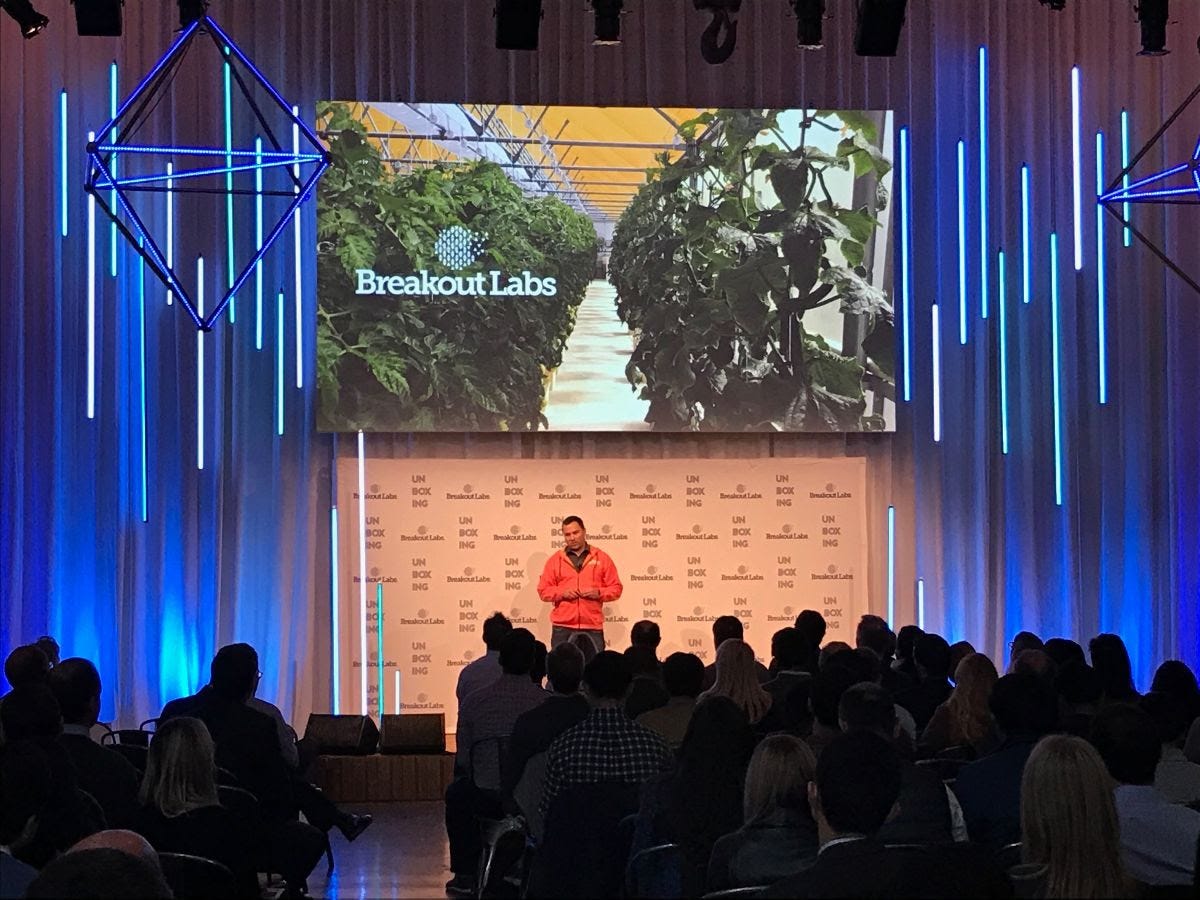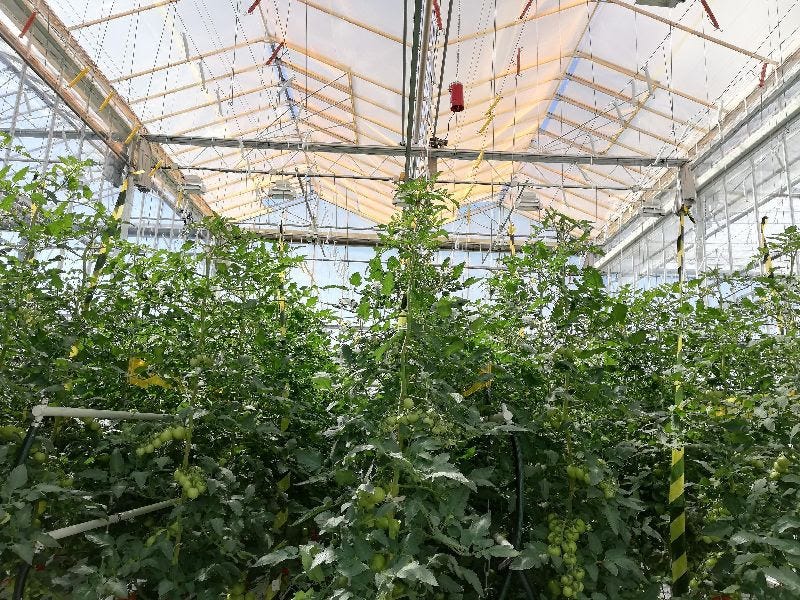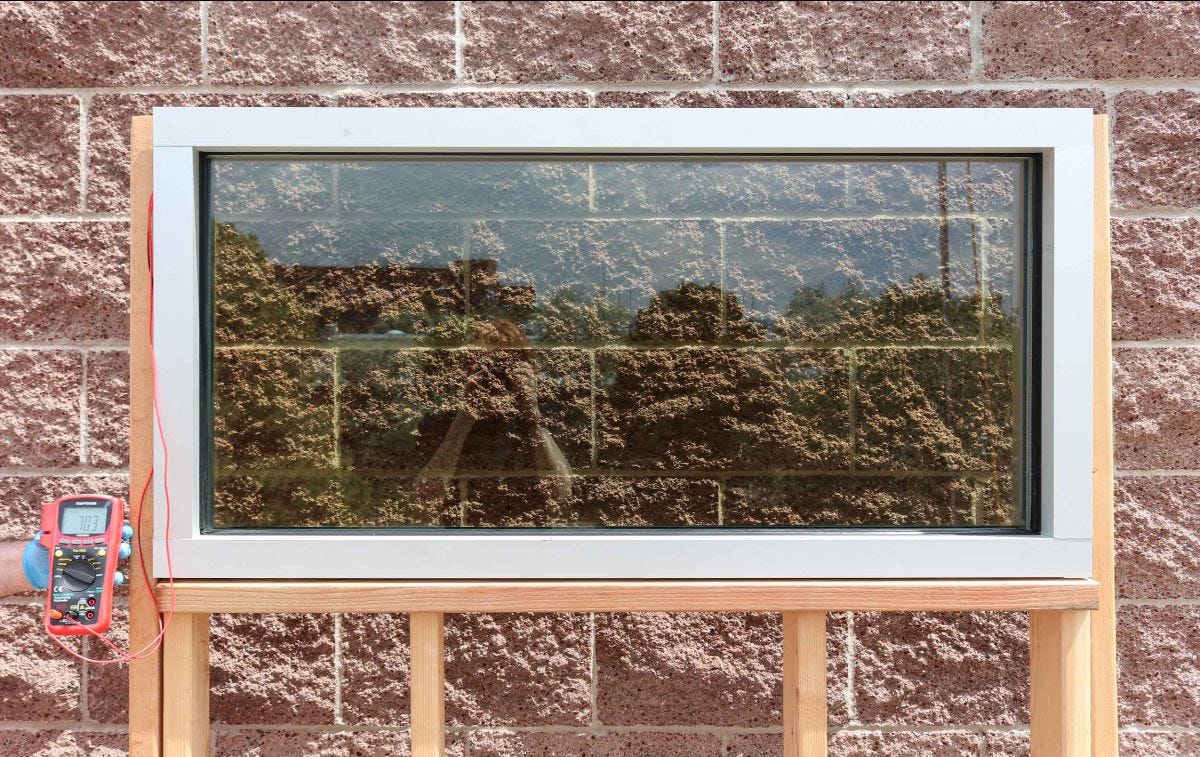Breakout Labs Spotlight Series: From Farm to Table — Quantum Dots That Do it All
Every year, Breakout Labs hosts Unboxing — our annual showcase in which Breakout Labs portfolio companies “unbox” their scientific innovation. Because the world looks very different this year and we cannot gather our wonderful community for this special event, we’ve decided to showcase our companies, and their most recent achievements, with our new Spotlight Series. Today, we’re glowing with excitement to highlight UbiQD.

Back in 2017, Breakout Labs funded UbiQD, an advanced materials company powering product innovations in agriculture, clean energy, and security. UbiQD develops a new kind of safer, brighter, cost-effective, and more reliable quantum dot. Quantum dots are known for their highly efficient ability to convert one spectrum of light into another. UbiQD’s quantum dots enable industry leaders to harness the power of light in new ways. The company has gone on to raise more than $5M from grants, partnerships, and investors.
The funding from Breakout Labs allowed UbiQD to specifically focus on developing their greenhouse product, UbiGro.
‘Gro, Baby, ‘Gro!
UbiGro empowers greenhouse growers to control not just the amount of light, but also its color spectrum, allowing plants to take full control of their lighting environment and get the most from sunlight. Enabled by UbiQD’s patented luminescent quantum dot technology, UbiGro uses fluorescence to increase photosynthetic efficiency and trigger fruit and flower production, without wires or electricity. It’s a more sustainable approach to spectrum control than horticultural lighting.

So how does it work?
UbiGro glows when illuminated with sunlight. Unlike shade cloths, spray coatings, or colored films that filter light, the technology uniquely converts underutilized photon wavelengths (blue & UV) to more potent longer wavelength photons (orange & red).
Traditional spectrum control relies on expensive LEDs, which typically emit only red and blue light. Recent studies in plant biology show that although a lot of green light is reflected off of a plant’s leaf, green light does play a vital role in photosynthesis. In fact, plant biologists are finding that a broader spectrum has numerous benefits over single color LEDs. Green light penetrates deeper into the plant canopy, promoting whole plant health. Instead of eliminating green light like traditional methods, UbiGro maintains most of the green component of sunlight, and adds red light.Ultimately, UbiGro increases crop yields for the grower, which means more revenue for the farm. Just the premium segment greenhouse area from Southern Europe, Mediterranean, South Korea, and North America cover over 600 million m². In total, there are more than 5 billion m² of greenhouses on the planet. UbiQD estimates the yearly revenue from a luminescent film delivering at least a 5% yield improvement is in the billions.
UbiGro has scaled and completed commercial trials in various countries and states, successfully boosting crop yields in each trial. According to UbiGro’s white paper on these trials, a farm in New Mexico saw a 21% yield increase in their hydroponic tomato crop. The company says new results will be peer-reviewed and published soon. You can read more about it on Fast Company.

To Infinity and Beyond
The success of these trials has buoyed UbiQD’s commercial strategy. In May, UbiQD partnered with Nanosys, the leader in quantum dot manufacturing and displays. Nanosys will use its industrial quantum dot and film manufacturing capabilities to help UbiQD address the massive greenhouse market for UbiGro. You can read more about this partnership here.
In February, UbiQD hired Michael Burrows (former Global Venture Leader at DuPont) as their Vice President of Business Development to lead their partnership efforts. Burrows was previously at Innovalight, a solar nanomaterials startup acquired by DuPont in 2011. He brings extensive early commercialization, partnership, and exit experience to the team.
In July, UbiQD and Solvay announced a partnership to develop and commercialize their second product type, quantum dot-based greenhouse film coverings. This partnership will give growers the ability to achieve spectrum optimization without needing to change existing greenhouse designs or invest in new infrastructure. More on this partnership here.
And lest you think UbiQD’s technology is earthbound, NASA has taken an interest in UbiQD for the growth of space veggies. In 2018, NASA awarded UbiQD a contract to develop greenhouse firms for space missions and in late 2019, they received a second contract of $750K to further explore using quantum dots to tailor the spectrum of sunlight for optimized crop growth in space and planetary exploration missions. You can read more about the Phase II Small Business Technology Transfer (STTR) contract here.

Through the Looking Glass
Despite the success of their agro business, UbiQD has not forgotten its founding vision of bringing clean energy solutions to market that could have planet-wide impact. Building on its success with UbiGro film, UbiQD is applying its core quantum dot technology to the development of solar windows.
It turns out to be relatively straightforward to add those solar cells to the edges of the glass; but as builders and architects everywhere are aware, aesthetics are critical and need to be impeccable if this technology is going to make it onto the Salesforce Tower any time soon.
UbiQD’s approach to solar windows is uniquely based on a glass laminate made of two layers of glass glued together with a polymer that contains quantum dots. When the dots are exposed to sunlight, they release invisible near-infrared photons that travel along the transparent panel towards its edge. The perimeter of the panel is fitted with solar cells, which convert the photons into electrical energy. The solar cell edge sits in the frame of a window, out of sight.UbiQD’s solar windows can be seamlessly integrated into a building because of their minimal photovoltaic profile, efficient electronics, and aesthetically pleasing design.
UbiQD has demonstrated it could also produce panels of a grey or grey-blue color and customize the tint of the glass (the darker the tint, the greater the energy output). Not only has UbiQD proven commercially viable efficiency, but they’ve done so without compromising aesthetics. You can read more on New Scientist.
The ability to customize these solar windows makes adoption across commercial industries much easier and pilots are currently underway in multiple countries.
Light at the End of the Greenhouse
UbiQD was founded on the deep technology behind an intrinsically safer, lower cost, high stability quantum dot; the first quantum dot that could become truly ubiquitous. However, what really distinguishes the company today is their product leadership in high value, high impact, mega volume end-markets. They are the first to create a QD-based luminesent film to increase greenhouse yields (UbiGro) and their photovoltaic window is the record efficiency holder (and arguably the most aesthetically forward-thinking option). Such a deep commitment to product innovations is resonating with partners and investors.
UbiQD is moving fast and furiously to commercialize their agricultural and window applications. But, applications for their technology don’t end with manipulating light for greater energy efficiency. UbiQD is exploring applications of their quantum dot technology in anti-counterfeit security inks. The company has been awarded a number of patents on their inks, and has more work planned for next year with an unannounced development partner.
UbiQD was founded in 2014 by Hunter McDaniel and is headquartered in Los Alamos, NM.
Read the full story on Medium.






